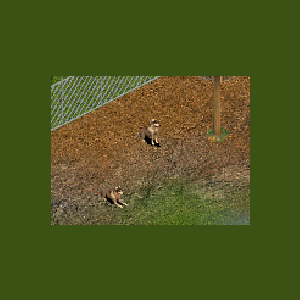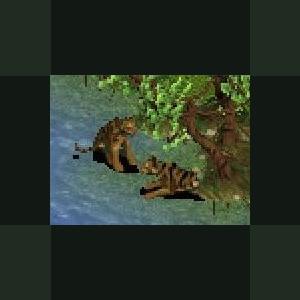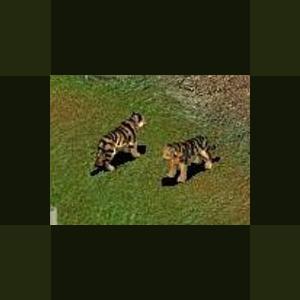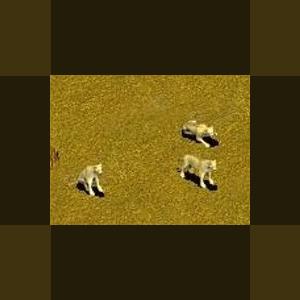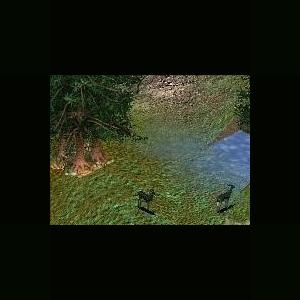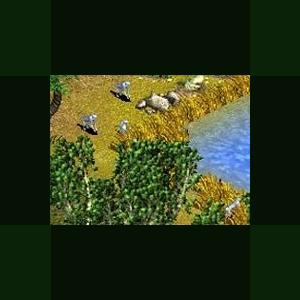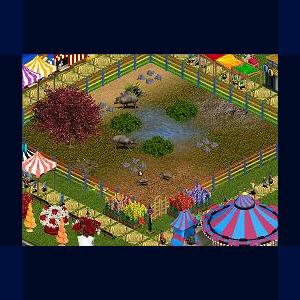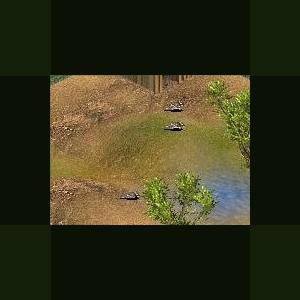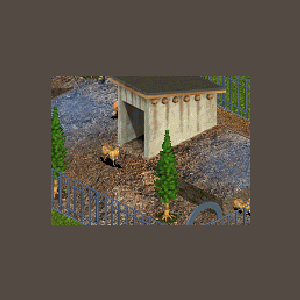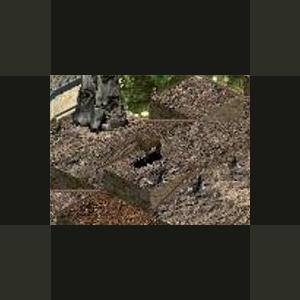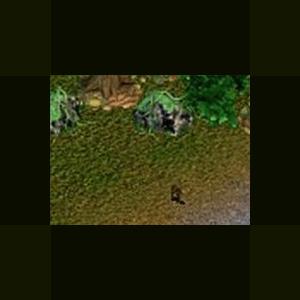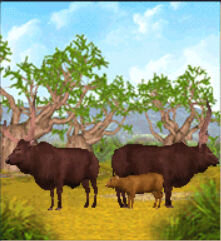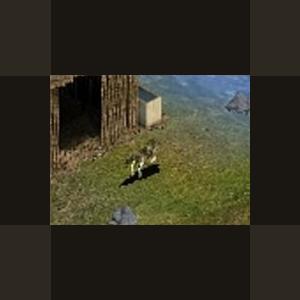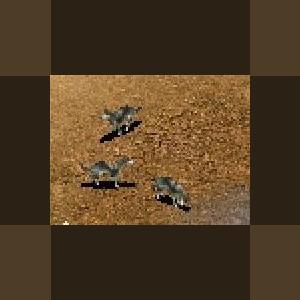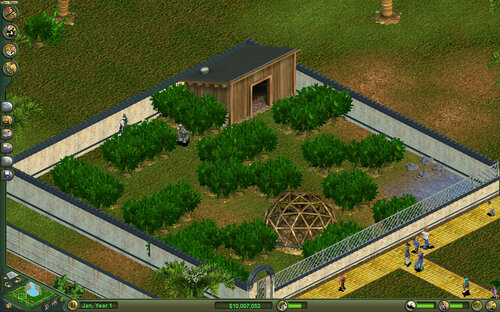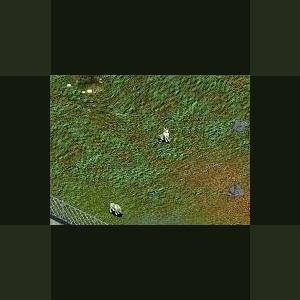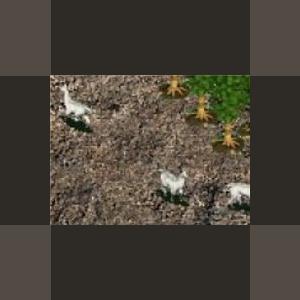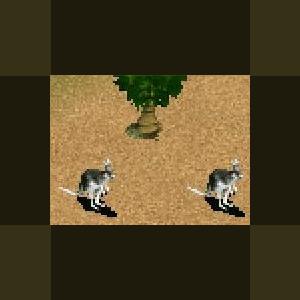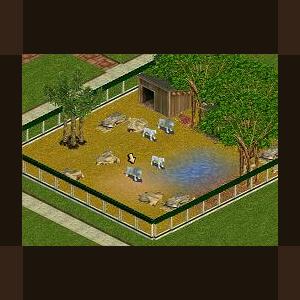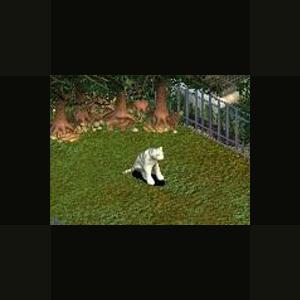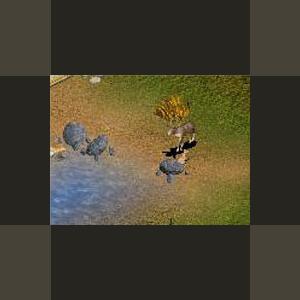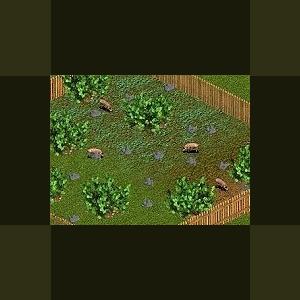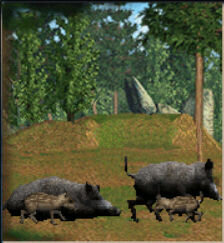280 files
-
Tibetan Wolf by Ryno
By Guest
Tibetan Wolf by Ryno
The Tibetan wolf is a grey wolf species (Canis lupus laniger) found in parts of Central China, southwest-Russia, Manchuria, Tibet and the Himalayan regions of India, Nepal and Bhutan.
Updated 2010-11-11
Just to save space with less in zip and smaller image.
Nothing new.
277 downloads
0 comments
Updated
-
Tigon by Ghirin
By Guest
Tigons are one of several big cat hybrids. For tigons, the male parent is a tiger and the female parent is a lioness. Tigons often have a combination of light stripes (from the father) and spots (from the mother) and the ground color is often a rich golden brown. Unlike ligers (lion/tigress crosses), tigons rarely exceed the size of either parent and males are often the size of a large female tiger.
Tigons are much rarer than ligers because it is harder to breed male tigers to lionesses. Male tigons are believed to be sterile; however, female tigons have produced cubs when bred to a male lion or tiger. The resulting offspring are either three quarters lion or tiger and usually strongly resemble the male parent. Such animals are called li-tigons or ti-tigons.
Tigons have behavior traits of both lions and tigers and often make sounds characteristic of both parent species.
Even though no wild tigons or ligers have been documented, there are local legends of animals resembling them in parts of India.
Reference:
http://www.lairweb.org.nz/tiger/tigons.html
Created by Ghirin 2003
Updated 2010-11-11
Just to save space with less in zip and smaller image.
Nothing new.
381 downloads
0 comments
Updated
-
Trinil Tiger by Moondawg
By Guest
Trinil Tiger
The Trinil Tiger (Panthera tigris trinilensis) is a fossil tiger dating from about 1.2 million years ago. This tiger was found at the locality of Trinil, Java, Indonesia. These fossils are now stored in the Dubois Collection of the National Museum of Natural History in Leiden, the Netherlands. Although these fossils have been found on Java, the Trinil tiger is probably not a direct ancestor of the Javan tiger. The Trinil Tiger probably became extinct fifty thousand years ago.
Updated 2010-11-11
Just to save space with less in zip and smaller image.
Nothing new.
384 downloads
0 comments
Updated
-
Tsavo Lion by Ghirin
By Guest
Tsavo Lion by Ghirin
The male lions of Tsavo are famous for either lacking manes or having very short ones.
These lions are also known for their agressiveness towards humans and livestock.
References:
www.fieldmuseum.org
www.nationalgeographic.com
Updated 2010-11-11
Just to save space with less in zip and smaller image.
Nothing new.
343 downloads
0 comments
Updated
-
Tufted Deer by Jordan
By Guest
Deer from the mountain forests of Asia
Updated 2010-11-11
Just to save space with less in zip and smaller image.
Nothing new.
360 downloads
0 comments
Updated
-
Vervet Monkey by BigCatKeeper
By Guest
Vervet Monkey
Author: BigCatKeeper
The different types of vervets vary in colour, but generally the body is a greenish olive or silvery grey. The face, ears, hands, feet & tip of the tail are black, but an obvious white band on the forehead blends in with the short whiskers. The males are slightly larger than females and are easily recognized by their turquoise blue scrota.
The vervet is classified as a medium-sized to large monkey. Its tail is usually held up, with the tip curving down. Arms & legs are approximately the same length.
Vervet Monkey created by Bigcatkeeper
Thanks to Professorpaul for some infomation!
Updated 2010-11-11
Just to save space with less in zip and smaller image.
Nothing new.
352 downloads
0 comments
Updated
-
Visayan Warty Pig by JohnT (JohnRN1)
By Fern
Thank you for downloading the Visayan Warty Pig. These endangered animals need our help to keep the species alive. This animal is especially dedicated to our zoo tycoon friend, the Sagebrush Kid.
"Move the .ztd file into the dlupdate (and not dupdate) folder if one exists in your Zoo Tycoon folder; otherwise move the .ztd file into the Updates folder that is in the Zoo Tycoon folder."
The default is C:\Program Files\Microsoft Games\Zoo Tycoon
Thank you to Fern and Jay for their invaluable encouragement guidance, and expertise.
--JohnT--
288 downloads
0 comments
Updated
-
Viscacha by And 1
By Guest
An South American animal
Updated 2010-11-11
Just to save space with less in zip and smaller image.
Nothing new.
243 downloads
0 comments
Updated
-
Viscuna by Ryno
By Guest
Viscuna by Ryno
The vicuña (Vicugna vicugna) is one of 2 wild South American camelids, along with the guanaco, which live in the high alpineous areas of the Andes.
Updated 2010-11-11
Just to save space with less in zip and smaller image.
Nothing new.
218 downloads
Updated
-
Walia Ibex by Ghirin
By Guest
Walia Ibex
Author: Ghirin
http://www.zoo-tek.com/forums/index.php?download=80
The Walia ibex (Capra walie, Capra ibex walie) is the southernmost member of the ibex family. This population of wild goats is only found in the Simein Mountains in northern Ethiopia. Like other populations of ibex, the Walia ibex dwells in steep habitats.
*Inspired by the Zoo Tycoon Brains Trust at the Zoo Tek Forums
Created by Ghirin 2005
Updated 2010-11-11
Just to save space with less in zip and smaller image.
Nothing new.
222 downloads
0 comments
Updated
-
Water Buffalo by Khaydar
By Khaydar
Adopt a Water Buffalo (Bubalus arnee) for your zoos.
Water Buffalo description:
Minimum happiness needed for chance of breeding: 90.
Liked foliage:
Rainforest Fern, Mangrove Tree
Liked rock:
Large Rock, Small Rock - Medium, Small Rock - Small
Animal can jump.
Number of animals allowed per exhibit: 3-15 with 20 squares each.
A suitable exhibit for 3 of this animal has 60 squares containing terrain of:
24 Rainforest Floor, 12 Dirt, 12 Grass, 12 Fresh Water
using 7 grid squares filled with 4 Mangrove Tree most liked plant
and using 5 Small Rock - Small most liked rock.
Preferred shelter: Large Stable.
Credits to DutchDesigns for the model
Made by Khaydar
229 downloads
- living animal
- bovid
- (and 1 more)
0 comments
Updated
-
Water Chevrotain by Ghirin
By Guest
Water Chevrotain
Author: Ghirin
The water chevrotain (Hyemoschus aquaticus) is the largest species of chevrotain and is native to the African rainforest. It is the size of a large rabbit, has an arched back, a raised rump, and a stocky body on slender legs. Neither sex has antlers, but the males have sharp tusks that extend below the upper lips. They have short, brown fur with pale spots and stripes on the head and neck to serve as camouflage. The head is pointed with large eyes, slit-like nostrils, and medium-sized ears.
Water chevrotains are true ruminants and are considered to be living links between the deer and the pigs. They feed mainly on fruits, leaves and buds, with occasional animal matter.
These animals are usually solitary. Females occupy a limited home range while the range of males usually overlaps the range of two females. While females stay within their home ranges for life, males are regularly expelled from their home ranged by other males.
Water chevrotains are active only at night, with females being more active than males. During the day, they rest under thick vegetation. At night, these animals come to river banks and clearings to forage. They may retreat to water as means of escape, but they do not remain in water for prolonged periods of time
Created by Ghirin 2004
Updated 2010-11-11
Just to save space with less in zip and smaller image.
Nothing new.
266 downloads
0 comments
Updated
-
Watusi Cattle by Khaydar
By Khaydar
Adopt a Watusi (Bos taurus africanus) for your zoos.
Watusi description:
Minimum happiness needed for chance of breeding: 90.
Liked foliage:
Tall Grass, Savannah foliage
Animal can jump.
Number of animals allowed per exhibit: 4-15 with 20 squares each.
A suitable exhibit for 4 of this animal has 80 squares containing terrain of:
64 Savannah Grass, 8 Dirt, 8 Fresh Water
using 10 grid squares filled with 4 Tall Grass most liked plant
and 6 small rocks.
Preferred shelter: Large Stable.
Credits to DutchDesigns for the model and mesh
Made by Khaydar
215 downloads
- living animal
- bovid
- (and 1 more)
0 comments
Updated
-
Welsh Pony by Sundance
By Guest
Welsh Pony by Sundance
Here is another equine from that rootin-tootinest (whatever that means), greatest horse lovin' gal on this side of the OK Corral. It is a Welsh Pony by Sundance. Made with help from Jay. Thanks, Jay!
The original home of the Welsh Mountain pony was in the hills and valleys of Wales. He was there before the Romans. His lot was not an easy one. Winters were severe. Vegetation was sparse. Shelter, most often, was an isolated valley or a clump of bare trees. Yet the Welsh pony managed not only to survive, but to flourish
Updated 2010-11-11
Just to save space with less in zip and smaller image.
Nothing new.
329 downloads
0 comments
Updated
-
Wepwawet by Ghirin
By Guest
Wepwawet
Wepwawet's name means "Opener of the Way" and this diety's standard led Egyptian armies to battle.
He also led the way for funeral processions. Wepwawet may have originally been wolf-like, but in time, he became associated with Anubis.
References:
www.wikipedia.org
www.philae.nu/akhet/NetjeruW.html#Wepwawet
http://www.nemo.nu/ibisportal/0egyptintro/1egypt/index.htm
Created by Ghirin 2008
Updated 2010-11-11
Just to save space with less in zip and smaller image.
Nothing new.
151 downloads
0 comments
Updated
-
Western Gorilla by Mjmannella
By mjmannella
This mod adds the Western gorilla (Gorilla gorilla) to your zoos. This was largely done to honour Kubi, a Western lowland gorilla who was a finalist in Microsoft's Beast in Show competition. Made by Mjmannella.
85 downloads
Updated
-
Westie by Jordan
By Guest
Westie by Jordan
The incredibly adorable West Highland White Terrier of Scotland. Dedicated to Paul and Snowy.
Updated 2010-11-11
Just to save space with less in zip and smaller image.
Nothing new.
177 downloads
Updated
-
White Alpaca by Ghirin
By Guest
White Alpaca by Ghirin
The alpaca (Lama pacos), a relative of the llama, is a domesticated camelid from the Andes Mountains of South America.
Unlike the llama, the alpaca has been bred for its wool and is much smaller than the llama. The wool of the alpaca is among the finest in the world, bested only by that of the vicuna and certain breeds of goat.
Alpacas come in two wool varieties, suri and huacaya. The wool of the suri alpaca is finer and straighter than that of the huacaya. It falls in locks along the sides of the suri alpaca. The huacaya alpaca is more common than the suri; its wool is crimpy and gives the huacaya a "teddy bear" appearance. The wool of either variety comes in several colors, from white to black.
The peoples of the Andes domesticated the ancestors of the alpaca approximately 5000 years ago and these animals were used as a source of wealth.
*Inspired by the Zoo Tycoon Brains Trust at the Zoo Tek Zoo Tycoon Forums.
References:
http://alpacaplanet.com/alpacas_FAQ.html
http://www.alpaca.com/thealpaca.cfm
http://www.americasalpaca.com/aboutalpacas.html
http://www.llama-llocater.com/camelid_history.html (excellent picture)
Walker's Mammals of the World, Nowak, 1999.
Updated 2010-11-11
Just to save space with less in zip and smaller image.
Nothing new.
147 downloads
0 comments
Updated
-
White Boomer by IcePengwyn
By Guest
White Boomer
Author: IcePengwyn
This is a Boomer - an Old-Man White Kangaroo that pulls Santa in Australia. Stats have been changed from the red roo.
The Boomer is mostly savannah, but also likes a little snow, sandy beaches, and some tropical terrain as they have to cover all of Australia. They like all Aussie plants, as well as palm trees, the Christmas Tree and the Snowman
In Australia, Santa Claus uses Boomers or Old-Man Kangaroos to pull his sleigh, as it is too warm for the Reindeer. Boomers like the Christmas Tree, Snowman, Palms, and a little snow for a Aussie White Christmas. The Boomers are quite tolerant of different habitats, as they are very laid back, man.
Updated 2010-11-11
Just to save space with less in zip and smaller image.
Nothing new.
235 downloads
0 comments
Updated
-
White Lions by JohnT (JohnRN1)
By Fern
Thank you for downloading the White Lions. These rare white creatures are dedicated to our friend Caddie for his love of animals. Enjoy.
"Move the .ztd file into the dlupdate (and not dupdate) folder if one exists in your Zoo Tycoon folder; otherwise move the .ztd file into the Updates folder that is in the Zoo Tycoon folder."
The default is C:\Program Files\Microsoft Games\Zoo Tycoon
Thank you to Fern and Jay for their invaluable encouragement guidance, and expertise. And, thanks to in game testers at DD.
--JohnT--
459 downloads
Updated
-
White Rhinoceros by Khaydar
By Khaydar
Adopt a White Rhinoceros (Ceratotherium simum) for your zoos.
White Rhinoceros description:
Minimum happiness needed for chance of breeding: 90.
Liked foliage:
Thorn Bush, Umbrella Thorn Tree, Tall Grass
Liked rock:
Large Rock, Small Rock - Medium, Small Rock - Small
Number of animals allowed per exhibit: 1-10 with 50 squares each.
A suitable exhibit for 2 of this animal has 100 squares containing terrain of:
60 Savannah Grass, 10 Sand, 25 Dirt, 5 Fresh Water
using 9 grid squares filled with 4 Tall Grass most liked plant
and using 8 Small Rock - Small most liked rock.
Preferred shelter: Large Stable.
Credits to DutchDesigns for the model and mesh
Made by Khaydar
349 downloads
- living animal
- rhinoceros
- (and 1 more)
Updated
-
White Tiger Of The West by Ghirin
By Guest
White Tiger of the West by Ghirin
The White Tiger is one of the four legendary creatures of China.
The others are the Black Tortoise, Azure Dragon, and Red Bird. Each animal is associated with a color, season. geographic direction, and element. The White Tiger is associated with metal, autumn, white jade, and virtue.
If a tiger lives to be 500 hundred years old, it begins to turn white starting with the tail.
Reference:
www.wikipedia.com
http://www.onmarkproductions.com/html/ssu-ling.shtml#tiger
Created by Ghirin 2008
Updated 2010-11-11
Just to save space with less in zip and smaller image.
Nothing new.
241 downloads
0 comments
Updated
-
White-tail Deer by LAwebTek
By Guest
White Tailed Deer
Author: LAwebTek
http://www.zoo-tek.com/forums/index.php?download=184
Location:
Whitetail can be found in all of the US except California and Nevada; they can also be found in all southern provinces in Canada.
Common Name:
White-tailed Deer, Whitetail, or Virginia Deer
Scientific Name:
Odocoileus Virginianus
Physical Characteristics:
The Whitetail is a small to medium-sized deer. In the summer, the deer is tan or reddish brown and turns to a colder grayish brown in winter. The belly, throat, nose band, and eye ring, are white. The beautiful tail that gives the animal its name is 6-13 in (15-33 cm) with the underside white. The Whitetail will flash this warning when they sense danger and while they run.
Height: 27-45" (68-114 cm)
Weight: Male: 150-310 lb (68-141 kg); Female: 90-211 LB (41-96 kg).
Habitat and Range:
The Whitetail lives across North America on farmlands, brushy areas, woods, and even suburbs where they can find garden vegetation. Once nearly exterminated in the Northeast and Midwest of the US, the deer is now more abundant than ever. It has become the most plentiful game animal in eastern North America. This is due to the hunting restrictions and the decline in number of wolves and Mountain Lions, the Whitetail's main predators.
Behavior:
The Whitetail may be active at any time of the day, with dawn and dusk being the ideal time for sighting the animal. The deer is a beautiful runner with a bounding gate. It reaches top speeds of 35 mph (57km/h). This deer can make vertical leaps of 8.5 feet (2.6 m) and horizontal leaps of 30 feet (9 m). When the deer becomes frightened it snorts through its nose and slowly stamps its hooves, a signal that alerts other nearby deer to danger. When alarmed, the deer flags its tail, displaying a large, bright flash of white. This is the final signal of danger to all the deer and it also helps a fawn follow its mother in flight. The Whitetail does not usually travel in large herds, they are usually seen in groups of 2-10. The bucks and does herd separately most of the year, but in winter they may gather together, or "yard up." Sometimes 150 deer may group in one yard. Yarding keeps the trails passable during heavy snow and protects the deer from predators, there is always safety in numbers.
Breeding & Reproduction:
The mating season varies with the location. In the north, they will breed in November and in the southern areas they usually begin in January or February. The Whitetail is less polygamous than other deer, usually a bucks mates with only a few doe. A young doe bred for the first time usually has one fawn after a gestation of 6.5 months. Thereafter she will have twins and occasionally triplets if resources are abundant.
Care for Young:
Fawns stay with their mother into the fall or winter. The fawns are spotted and can walk within a few hours of birth, but they will remain hidden in tall grasses or brush, waiting silently and still for their mother to return and feed them. The young blend in well with most surroundings because their coats are speckled with white. They begin to lose this camouflage after 9 months. The male fawn will begin growing antlers after several months. A doe and her two-year old fawns is a common sight and easy to identify. However, the doe generally drives off her young before giving birth to another pair.
Diet:
The Whitetail grazes on most green plants, including aquatic ones in the summertime. In autumn, it will find acorns, other nuts, and corn. During winter, it browses in the woods, eating the bark off trees, including the twigs and buds of viburnum, birch, maple, and other conifers.
Programming by LAwebTek
Updated 2010-11-11
Just to save space with less in zip and smaller image.
Nothing new.
767 downloads
0 comments
Updated
-
Wild Boar by Coolperson5
By Guest
The wild boar lives in grasslands and coniferous forest across the old world.
Updated 2010-11-11
Just to save space with less in zip and smaller image.
Nothing new.
277 downloads
0 comments
Updated
-
Wild Boar by Khaydar
By Khaydar
Adopt a Wild Boar (Sus scrofa) to your zoos.
Wild Boar description:
Minimum happiness needed for chance of breeding: 90.
Liked foliage:
Weeping Willow Tree, White Oak Tree
Liked rock:
Large Rock, Small Rock - Medium, Small Rock - Small
Number of animals allowed per exhibit: 2-6 with 12 squares each.
A suitable exhibit for 2 of this animal has 24 squares containing terrain of:
11 Deciduous Floor, 2 Dirt, 1 Fresh Water, 4 Grass, 6 Coniferous Floor
using 10 grid squares filled with 4 Weeping Willow Tree most liked plant
and using 6 Small Rock - Small most liked rock.
Preferred shelter: Large Burrow.
Credits to Hendrix for the model and mesh
Made by Khaydar
261 downloads
- living animal
- pig
- (and 1 more)
0 comments
Updated

